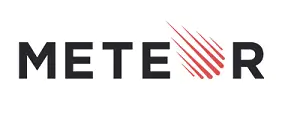With web development, you can easily and efficiently build an app or website skeleton with pre-written functionalities.
We’re talking about web frameworks, which include standardized coding practices and end-to-end templates.
Each one can be replicated and customized for a specific application.
When you use a web development framework, you don’t have to create critical functionalities from scratch but rather run the complexities in the background.
Ready-made tools such as React, Django, or Spring Boot also offer other potential benefits.
To begin and explore their core features and upgrades that power modern web development.
Let’s start!
What is a Web Development Framework?
We know most of you know what it is, but consider this as something to refresh your memories.
Software solutions can be created using a set of ready-to-use programming modules, tools, and libraries.
As a result, frameworks provide developers with the tools and functionalities they need to build websites, applications, APIs, services, and other solutions and dictate the rules.
You create the skeleton for your project quickly and can further extend it according to specified requirements.
To facilitate the development and integration of multiple components of a large software project, frameworks can also include utility programs, code libraries, scripting languages, and other software.
Generally, web development platforms are customizable, meaning you can customize ready-to-use templates and components to meet your specific needs.
You can also integrate your own code.
Advantages
ECONOMICAL
In most cases, framework-based web development is less time-consuming and more cost-effective.
It saves programmers the trouble of reinventing the wheel by performing typical tasks from scratch when starting a new project.
By using pre-written templates and tools, developers can quickly create a project outline, thus saving a considerable amount of time.
Furthermore, they can concentrate on the details more effectively, contributing to the quality of the future solution.
Thousands of developers have created and improved ready-made components, ensuring that they have been tested in every scenario possible.
In this way, you avoid numerous bugs and create a highly stable, reliable, and secure solution in a short period of time, which is pleasing to your customers.
TECH-FORWARD
Moreover, framework methodologies generally incorporate the best software engineering practices, so you can feel confident implementing them into your projects.
The community ensures the quality of framework components, so you can feel secure using them.
By following these rules, you can avoid numerous design obstacles and eliminate bugs.
In order to simplify maintenance, frameworks define a unified structure for application development, so applications based on frameworks are much easier to maintain and refine.
A developer can easily understand a standard organization of app components and its operating principles, and add functionality or change them seamlessly.
Framework-based solutions tend to be faster and ensure a higher loading capacity, which is crucial for eCommerce solutions.
They are also easier to scale.
There are only two situations in which natively supported programming is warranted: large projects with complex architectures and interdependencies.
In the case of a simple project that does not require further development.
An intensive low-level optimization is required for a project.
In all other cases, framework-based development is faster and more reliable.
Front-end and Back-end frameworks
To create a fully-functional web application, the front-end (client-side) part must manage user interactions with it, while the back-end (server-side) part is responsible for the inner workings.
This classification also divides the most popular web frameworks into two categories: backend and frontend.
Frameworks for Front-end
For creating the front end of a web application, front-end development frameworks provide a prewritten structure.
The data flow is determined by the user input and the organization of functionality, user interaction, and style components.
Consequently, front-end frameworks serve to create intuitive interfaces, as well as efficiently locate, manage, and update data received from the server or API.
Front-end frameworks are powered by HTML, CSS, and JavaScript.
The most popular front-end development frameworks are Angular, React, Vue, Ember, and jQuery.
Frameworks for Back-end
An application’s server-side architecture can be delivered using a backend development framework.
In addition to handling all manipulations between the server and database, they create URL mappings and establish the right structure to implement business logic specificity.
In addition to ensuring smooth communication between the various services in a fully-functioning web application, back-end developers also monitor user interactions.
Back-end frameworks are powered by Python, JavaScript, PHP, and Ruby.
Popular Back-end development frameworks: Django, Express, Rails, Laravel, Spring.
Top Frameworks for Frontend and Backend
1. Ruby on Rails
A web application framework written by David Heinemeier Hansson, Ruby on Rails is exceptionally productive.
The Model-View-Controller pattern can be used to create a database-driven web application using Rails, which is at least ten times faster than a typical Java framework.
Rails is a Model-View-Controller framework that employs Ruby and is held in high regard by many developers.
Popular applications such as Airbnb, GitHub, Hulu, and Shopify make use of Rails, due to its beginner-friendly nature.
This allows those new to web development to get up and running quickly and easily.
Moreover, there are many gems available for Rails, expanding the capabilities of your application while speeding up development processes further.
A supportive community of professionals provides helpful tutorials and resources so that you can become an expert in Rails in no time.
In addition, rails take quite some effort to deploy and run in a production environment, and the learning curve becomes steep as you dive deeper into the framework to understand its magic.
Rails 5.0.0.beta2 is the latest version.
2. Django
Django is another framework that helps in building quality web applications.
It was invented to meet fast-moving newsroom deadlines while satisfying the tough requirements of experienced Web developers.
Developers claim Django applications are ridiculously fast, secure, scalable, and versatile.
Django is a powerful Model-View-Template web framework based on Python. Google, Youtube, and Instagram are some of the biggest names that use it.
Its batteries-included feature contains pre-made functions such as message delivery and authentication.
Following the DRY principle and Convention Over Configuration pattern, it has excellent security features: developers can either use built-in tools to build a secure website or rely on Django’s capabilities such as preventing code execution when creating templates.
Django 1.9.2 is the latest version.
3. AngularJS
Angular is a framework by Google (originally developed by Misko Hevery and Adam Abrons) that helps us in building powerful Web Apps.
Angular is a framework used to build high-performance, large-scale web applications with ease of maintenance.
Many web applications are built with it.
It is an open-source development framework that was rewritten in TypeScript instead of JavaScript in 2016.
It was created in 2010 and redesigned in 2016.
As a result, Angular’s development capacity was turbocharged and it was ready to handle large-scale enterprise applications.
Using two-way data binding, it connects architecture components to the backend, enabling dynamic changes to be made to the backend as a result of user interactions.
With its broad range of tools and packages, a framework is an all-encompassing tool for creating cross-platform applications.
However, Angular tends to be larger than other front-end development frameworks, which may affect performance.
Angular 7.1.5 is the latest version.
4. ASP.NET
ASP.NET is a framework developed by Microsoft, which helps us to build robust web applications for PCs, as well as mobile devices.
It is a high-performance and lightweight framework for developing Web Applications using .NET.
In summary, it is a framework that is powerful, productive, and fast.
ASP.NET 5 (ASP.NET Core 1.0) is the latest version.
5. Meteor
One of the best frameworks for building real-time mobile and web apps is Meteor or MeteorJS.
It allows rapid prototyping and produces cross-platform (Web, Android, iOS) code.
Deployment, scaling, and monitoring are made much easier with Galaxy’s cloud platform.
JavaScript is the language of choice and HaggleMate, WishPool, Telescope, and others use Meteor.
Meteor 1.2.1 is the latest version.
6. Laravel
Founded by Taylor Otwell in 2011, Laravel follows the MVC architectural pattern like all other modern frameworks.
It emphasizes elegance, simplicity, and readability.
With Laracasts, which contains hundreds of tutorials, one can start learning and developing Laravel right away.
As a Model-View-Controller framework, Laravel uses PHP, which is one of the most popular languages on the web.
The Laravel framework comes with API support out of the box, and several packages can extend its capabilities.
A beginner’s heaven with over 1,000 screencast tutorial videos on PHP, Laravel, and frontend technologies in the Laravel ecosystem, Laracasts is a screencast tutorial website.
For massive projects, Laravel may not be as performant as Django or Express.
PHP is the language of choice.
Deltanet Travel, Neighbourhood Lender, and many other websites use Laravel.
7. Express
In addition to providing a robust set of features for web and mobile applications, Express is a minimal and flexible framework.
The websites that use Express are Storify, Myspace, LearnBoost, etc.
It is relatively minimal, meaning that many features are available as plugins.
Express allows rapid development of Node.js-based Web applications.
Express is also one of the major components of MEAN.
With its flexibility and minimalist feel, Express is quite popular among large enterprises.
Furthermore, it is an open-source framework for the Node.js environment, which is in high demand right now.
The Express framework is a JavaScript-based framework for creating web applications, APIs, and mobile solutions.
It is compatible with third-party frameworks.
8. Spring
It is the most popular application development framework for enterprise Java, developed by Pivotal Software.
Thousands of web developers around the world use Spring to build robust and high-performance applications.
Spring makes it possible to build JVM-based systems and applications that are simple, portable, fast, and flexible.
Using Java, the most popular programming language, Spring is a Model-View-Controller framework.
It is used by a number of websites including Wix, TicketMaster, and BillGuard.
Spring’s sister projects boost its performance and enable you to scale your business quickly.
The fact that it uses Java, a strongly typed language, is a severe pro to many web developers.
In the absence of Java knowledge, the learning curve could be steep.
9. Play
Developed in Java and Scala, Play is a modern framework for web applications.
This framework is based on the MVC architecture and uses convention over configuration, hot code reloading, and error display in the browser to maximize developer productivity.
Play describes itself as “The High-Velocity Web Framework.”
Scala and Java are the languages used. Play 2.4.6 is the latest version.
LinkedIn, Coursera, LendUp, and others use PLAY.
10. CodeIgniter
EllisLab’s CodeIgniter framework is a popular framework for developing dynamic websites.
CodeIgniter is loosely based on MVC architecture, with controller classes required, but models and views optional.
CodeIgniter promises exceptional performance, nearly zero configuration, and no large monolithic libraries.
PHP is the language of choice.
CodeIgniter 3.0.4 is the latest version.
Takeaway
We hope our list of the most popular web frameworks gives you some profound insights.
Understand your project requirement then select the frameworks which can make the development process easier.
With the insights from this blog you now know which languages are trending among developers.
Remember that big companies are always migrating and trying new stuff all the time, so don’t be afraid to try new languages.
If you want an expert opinion on your projects just give us a call or fill out this form.














